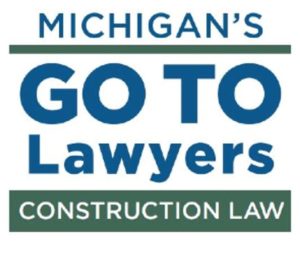(February 9, 2017) The Michigan Legislature in December amended an existing law governing the practice of medicine by physician’s assistants. The new law, 2016 P.A. 379, takes effect March 22, 2017. It is intended to give physician’s assistants (PAs) greater autonomy in day-to-day operations by allowing them to practice without daily supervision of a physician. Whether it will do so is questionable since it is not clear that the increased autonomy for PAs comes with any lessened responsibility or liability exposure for physicians. But it definitely comes with some new requirements that physicians and medical groups practicing with PAs will need to address.
The current regulatory structure begins with this premise: A physician may not delegate ultimate responsibility for the quality of the medical care rendered to a patient, even if that care is provided by a PA. This means the physician remains obligated at all times to “supervise” the PA in his or her practice. Current law sets certain specific practice ratios limiting how many PAs may be supervised by a physician in various practice settings, and permits PAs to practice only to the extent authorized by specific delegation of the supervising physician. Reflecting this “tethered practice” concept and reinforcing the physician’s ultimate responsibility for the care provided, prescriptions written by a PA with delegated authority under current law must bear the names and licenses of both the prescribing PA and the supervising physician.
The new law appears to largely untether the PA’s daily practice from the physician with whom he or she practices. The new law eliminates the express prohibition against a physician delegating to a PA ultimate responsibility for the quality of the medical care delivered to patients. It also eliminates the practice ratios that limit the number of PAs in a practice. And it provides that prescriptions – even for controlled substances – written by authorized PAs are written solely under their name and DEA registration authority; the physician has no reported connection to the prescription.
But does this new PA autonomy and the elimination of the prohibition against delegating ultimate responsibility for the quality of care excuse the physician from liability for the acts of the PA? That is not so clear.
In theory, once the new law is in effect one physician may work with 20 or 30 PAs; there is no ratio limit at all. But the specific ratio rules are replaced with a somewhat cryptic provision that states that the number of PAs with whom the physician is practicing and to whom the physician has delegated authority to perform various acts or functions is subject to the general statute governing physician licensure and discipline. It is worth carefully considering that licensing statute.
It provides that a physician may be disciplined for (among other things) “a violation of general duty,” including “negligent delegation or supervision.” This suggests that the conduct of a physician in practicing with PAs remains subject to a “standard of care” measure that may ultimately be judged only in the rearview mirror of a malpractice case or licensing disciplinary hearing – but it can still be judged. It also suggests the physician is still ultimately the party from whom authority to practice medicine is derived with respect to any individual patient; and, therefore, the physician still retains legal responsibility for supervising the work of PAs with whom he or she practices. Despite the change in the statute, it still seems the physician remains a potential guarantor of the quality of the medical care provided by PAs.
Where current law limits the scope of a PA’s practice to those tasks and functions specifically delegated by the physician, the new law eliminates this concept. Instead, a PA’s practice scope is to be set forth in a “practice agreement” with a physician. A practice agreement must include all of the following:
- An agreed process between the PA and physician for communication, availability, and decision-making when providing medical treatment to a patient;
- A protocol for designating an alternative physician for consultation in situations in which the participating physician is not available for consultation;
- The signature of the PA and the participating physician;
- A termination provision that allows the PA or participating physician to terminate the practice agreement by providing written notice at least 30 days before the date of termination;
- A requirement that the participating physician verify the PA’s credentials; and
- The duties and responsibilities of the PA and participating physician.
Not surprisingly, the practice agreement may not include as a duty or responsibility of the PA or the participating physician any act, task, or function that the PA or physician is not qualified to perform by education, training, or experience and that is not within the scope of the license held by the PA or physician. Clearly a physician evaluation of the PA’s competencies is expected.
Further, the required elements of a practice agreement reinforce the intention that PAs must at least be able to seek and obtain a physician’s medical expertise. Conceptually, however, PAs are permitted to practice without direct or immediate physician supervision so long as it is within the parameters of the practice agreement. Consistent with this model, PAs may now prescribe, administer and dispense Schedule 2-5 Controlled Substances. Additionally, prescriptions written by PAs will bear only the PA’s name and rely on the PA’s own DEA registration. However, this means that PAs now must apply for and obtain their own Michigan Controlled Substance License.
Rules governing arrangements with PAs who are shareholders or members of and practice through a PC, PSC or PLLC remain essentially unchanged but now incorporate the practice agreement concept. Finally, the new law adds a training requirement for PA’s in identifying victims of human trafficking which will be included as part of license renewal requirements beginning in 2017.
The new law is consistent with the increasingly important role of mid-level providers in the delivery of health care, at least insofar as it gives PAs greater day-to-day practice autonomy and independence. Some may argue that it simply brings the law into closer conformity with the realities of current practice. If it does not actually relieve physicians of ultimate responsibility for the quality of care delivered by PAs, it is not clear that it will materially alter how they practice together.
Regardless of that, physicians and PAs need to put in place compliant practice agreements by March 22, 2017 and otherwise assure that their employment and practice arrangements are compliant with the new law. Please contact John Lichtenberg or your regular Rhoades McKee attorney if you have questions or would like assistance regarding these changes.
More Publications


